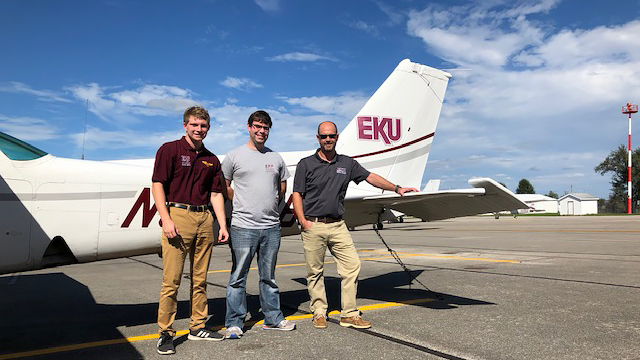Port in a storm
A man, a plan, a hurricane evacuation
Hurricane Florence was two days from landfall somewhere in the Carolinas when Mark Finkelstein, a private pilot from Oak Island, North Carolina, decided it was time to get out of the way.

“The bull's-eye kept moving around, but by the time I departed it was clear we were definitely going to get hit,” he said.
Finkelstein’s plan of escape featured a far more flexible option than fighting the crowds at the filling stations and fleeing westbound in the eastbound lanes of an interstate highway—but timing was key. On Sept. 12, while the weather remained docile, he climbed into his Columbia 400 single-engine airplane at Cape Fear Regional Jetport and headed for Richmond, Kentucky, intent on putting a few hundred miles—and the Appalachian Mountains—between himself and the hurricane.

“The feeling of relief when I lifted off was immense,” he told me in a recent Facebook chat.
Topography and the inland location were great reasons, but not the only reasons, why the 1,300-hour instrument-rated private pilot selected Central Kentucky Regional Airport as his destination. Finkelstein had flown in twice before and knew someone in the area, and the airport “had nice approaches.” (The instrument-approach capability was fortuitous because although Finkelstein had departed North Carolina in visual conditions on his IFR flight, the destination sat beneath a 500-foot overcast when he arrived.)
The destination had something else going for it that you won’t find on a chart or in an airport directory: a spirit of welcome for a fellow aviator, as demonstrated by airport manager Jason Bonham and the fixed-base operation, which is run by the aviation program of Eastern Kentucky University. Many of the FBO workers are students in the program. When Finkelstein called ahead to say he was coming, Bonham and his crew made sure the visitor would be well looked after.
“They were very welcoming and hangared me without charge and were generally great,” Finkelstein said, noting that he later expressed his gratitude in a letter to the university.
In a phone interview, Bonham said the FBO, which looks after GA aircraft including the 15-aircraft fleet that serves the 260 aviation students, squeezed Finkelstein’s airplane into a maintenance hangar to wait out the storm. Florence pelted the Richmond area with heavy rain but did little damage.
The airport underwent a runway lengthening several years ago, bringing in a larger breed of airplanes, and it “gets pretty crowded at times,” Bonham said, noting that a project to expand T-hangars at the field had just been launched.
The aviation community is “a small community, a small world,” he said, and taking in a fellow pilot in need is the right thing to do.
“Any time somebody calls, we want to help them out,” he said.
Finkelstein, having brought his carefully planned flight of retreat from the storm to a safe conclusion in the haven provided by Bonham and his EKU crew, now had to watch North Carolina’s weather from a distance and wait for ferocious Florence to falter and its effects to fade.
“Once I got there, it was agonizing to see how long the storm lingered over my area. It was literally moving at 2 MPH at one point and took days to move off,” he wrote. “Even once it did, I had to wait a couple of more days until water and sewer were restored to my neighborhood.”



